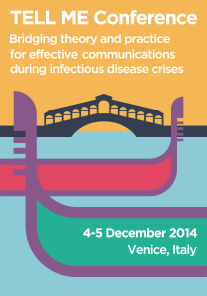Planning a clinical trial in order to test a possible treatment for Ebola. This is the reason that brought Roberto Satolli – physician and journalist, director of Zadig and member of the TELL ME project – to the small fishing town of Lakka, a few miles from Freetown, in Sierra Leone. He is there with Emergency, the Istituto Spallanzani of Rome and the Reggio Emilia IRCCS, to assess the situation and discuss the protocol that should lead the research. “In order to better coordinate some aspects of the experimentation, my presence on the field was necessary,” explains Roberto.
Submitted on Wed, 11/12/2014
In the globalised environment, the interconnection and interdependence of economies enable pathogens to spread in unprecedented ways and extents. Human to human transmission (close encounters of the first kind) occur with pathogens that are well adapted to the human host, and spread between countries and continents. In a similar way, pathogens spreading between animals (close encounters of the second kind) spread not only within a farm, but also between different farms, due to trade, or live animals or vector movement, in a transboundary manner. Close encounters of the third kind are those
Submitted on Tue, 11/11/2014
From a European perspective, the recent Ebola crisis has been portrayed as a health crisis that although in distant Africa, has the potential to spread to western states. It has been interspersed with intermittent panics where suspected cases are announced in European hospitals (which for the most part have shown to be negative upon testing). The result of the media, in drawing attention to the emerging threat of an Ebola outbreak, and the link with certain African countries, has fostered various forms of stigmatisation for those perceived as being connected to the event.
Submitted on Thu, 09/18/2014
Each outbreak has some lessons to teach to those involved in health crisis management, especially in terms of risk communication. In fact, any infectious disease can become much more dangerous when supported by wrong or missing information. On the one hand, misinformation can spread far and fast, especially online, often crossing geographic borders before local organisations have ramped up their response to an outbreak. On the other hand, the lack of proper information about, for instance, how people get infected, may slow down efforts to contain the diffusion of the disease.The Ebola outbreak
Submitted on Wed, 09/03/2014
Two recent papers about antivirals on BMJ have attracted headlines on media all over the world. In this case press has sometimes confused avian, pandemic A(H1N1) and seasonal flu, the condition on which the two reviews questioned the efficacy of treatment. Here Donato Greco, an internationally renowned epidemiologist and expert of public health, focuses on an important point neglected in the work of Cochrane’s authors.
Submitted on Wed, 04/16/2014
In July 2012, the Tell Me project produced a report on the past and previous uses of social media during pandemics. One of the chapters focused on stakeholder engagement of healthcare professionals who have an interest in using social media and its role in healthcare communication. Project partners at BMJ conducted two hour-long Twitter chats in collaboration with @nhssm (NHS social media); a Twitter community dedicated to NHS staff who are interested in discussing the uses of social media in healthcare.
Submitted on Wed, 01/15/2014


